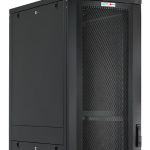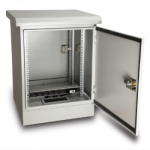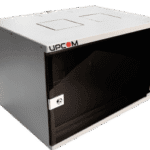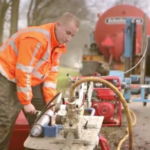10 Oct Construction Products Regulation (CPR) for Cables

CPR for cables (Construction Products Regulation) for cables became a legal requirement in July 2017. CPR for fiber optic cables is having an intended use for permanent installation in buildings and construction works, to be accompanied by a Declaration of Performance (DoP). This requirement relates only to the Reaction to Fire performance of Fiber Optic, Data Lan Cables, Power Cables, etc.. As part of CPR for cables, all copper and fiber cables sold into the EU market must comply and hold the CE mark on it. Every CPR product also requires a Declaration of Performance (DoP) from the manufacturer that identifies the product, it is intended use and its Euroclass characteristics.
EN 50575 enables designers and installers to consider the contribution that cables make to the spread of fire. As cables run between rooms and floors or above ceilings and are often made from flammable materials. it’s important that the fire risk can be assessed easily. They can also be a source of ignition if badly installed, damaged or faulty.
CPR Construction products regulation for cables
How will it affect you..
Manufacturers need to draw up a Declaration of Performance (DoP), in a standard format which must include:
- A unique ID for the specific product
- Intended uses
- Manufacturers information
- The AVCP (Assessment and Verification of Constancy of Performance) system applied
- A dated reference of the harmonized standard
- The Notified Body used
- The Declared Performance (or NPD if no performance is declared)
Which fire classes are specified in the standards under the CPR?

CPR en 50575
Preparation Purpose of EN 50575 Standard:
It is the limitation of the formation and spread of fire and smoke, the fire reaction performance and test methods required by the cables within the scope of the standard, such as power, control and communication cables, which are used in general applications in construction works and are subject to fire reaction conditions.
Civil works: Describes all building works including both building and other civil engineering works.
Building material: It describes all materials or tool materials that are produced and put on the market for permanent use in all kinds of construction works or any part of these works, whose performance affects the performance of building works related to basic requirements.
That is, the EN 50575 standard covers all cables manufactured for permanent use in construction and other engineering works.
What cables are not excluded by the CPR?
In the case of cables, whose standard application is developed in EN 50575, CPR Construction products regulation for cables affects only those power cables, telecommunications, data and control, to be incorporated in construction works permanently, whether buildings or works civil engineering. They are excluded those cables for connecting devices such us cables in the automotive sector, electrical cables, etc, in the same way, lift cables and those manufactured for a specific process are not included.
For instance;
• Patch cables (patch cords)
• Cable systems covered by the Machinery Directive (e.g. lift cables)
• Cables not intended for use in construction works (e.g. outdoor cables)
• Flexible cables to devices, lights or machines
• Cables leading to consumers via connectors
• Safety cables with insulation integrity and/or functional integrity
What about our cables and CPR certification?
We are manufacturing an extensive range of EN50575 CPR compliant cables. This range is intended to be used in applications where CPR classification is required. We produce the safest possible cable solutions.
The Construction Products Regulation (CPR) is an EU regulation for installation cables, classifying cables based on their fire performance. It is aimed to improve fire safety in buildings. In case of a fire, the biggest danger is the toxic smoke. Since buildings are filled with cabling, the risk of spreading fire is big.
Our cable range consists of
Tight Buffer Cables, Loose Tube Cables,
FTTx Cables, Arial Type Transmission Fiber Optic Cables,
Industrial Fiber Optic Cables. Data Lan Cable (CAT6, CAT6A and CAT7)
These specially designed cables provide optimal, tested safety in every environment. They are tailor-made to minimize any hazardous smoke, burning droplets and acidity in the smoke. The outer jacket is flame retardant, providing optimal resistance to spreading fire and therefore maximizing the overall safety of the construction and building. Available Euroclass types include B2ca, Cca and Dca, Eca.
Construction Products Regulation (CPR) for Cables
CPR for cables (Construction Products Regulation) for cables became a legal requirement in July 2017. CPR for fiber optic cables is having an intended use for permanent installation in buildings and c…
No comment 0 LikesOptical Fiber
What is optical fiber? We are used to the concept of moving knowledge in numerous ways. A wire cable transports the sounds from our speech into a socket on the wall and is borne by another cabl…
No comment 8 Likes19″ Rack Cabinet
What is a 19” Free Standing Rack Cabinet? 19” free standing rack cabinets provide a robust, cost-effective enclosure solution. PDU mounting or connectivity on both the front and rear of the cabinet. T…
No comment 0 Likes5 Fan Facts About the Fiber Optic Cables
Fiber optic cables are a type of cable that use glass or plastic fibers to transmit data. Here are some interesting facts about fiber optic cables: Speed: Fiber optic cables are capable of transmittin…
No comment 4 LikesWhat is fiber optic cable
Fiber optic cables are an innovative communication medium that transmit data using light instead of electrical signals. Designed for efficiency and speed, these cables leverage thin strands of glass o…
No comment 4 LikesHow Much Does Fiber Optic Cable Installation Cost in 2025?
Fiber Optic Cable Installation Cost | Reduce Costs with Cable Blowing Machines – UPCOM How Much Does Fiber Optic Cable Installation Cost? Updated guide for telecom and infrastructure professionals (20…
No comment 4 LikesIP55 Outdoor Cabinet
We found out that there is no enough information about 19” IP55 Outdoor Cabinet and thus we will investigate it. If you are reading this article, then you are probably planning to make a procurement s…
No comment 3 LikesSecurity in Server Cabinet Racks: Protecting Your Critical Infrastructure
Ensuring the security and operational continuity of network equipment is a fundamental priority for modern IT environments. As organizations grow their digital operations, server cabinets evolve into …
No comment 0 LikesFTTH installation Technologies
FTTH installation technologies Table of Contents Innovative approach to FTTH installation Technologies…1 Infrastructure Sharing…2 Duct sharing in France…2.1 Sewer pipes…2.2 Cle…
No comment 1 LikeCable Blowing by Pressurized Air / Fiber Optic Cable Blowing Procedure
Cable Blowing (Sometime called air assisted cable blowing, Cable Blowing by Pressurized Air, air blowing, jetting and all these words are describing method of cable blowing with pressurized air) Cabl…
No comment 1 Like
- Security in Server Cabinet Racks: Protecting Your Critical InfrastructureEnsuring the security and operational continuity of network equipment is a fundamental priority for modern IT environments. As organizations grow their digital operations, server cabinets evolve into engineered protection systems designed to safeguard mission‑critical infrastructure. Why Robust Security Matters Server cabinets house valuable hardware that...
- How to Blow Fiber Optic Cable: A Comprehensive Fiber Jetting GuideTable of Contents Introduction to fiber optic cable blowing Required Equipment and Tools Understanding Fiber Blowing Machines and Their Components Preparing for the Fiber Blowing Process Safety Precautions Before Starting Step-by-Step Fiber Optic Cable Blowing Procedure 6.1 Setting Up the Fiber Blowing Machine 6.2 Preparing...
- Cable Spooling Machines: The Ultimate Guide to Efficient Cable HandlingIn industries such as telecommunications, energy, manufacturing, and infrastructure, the need for Cable Spooling Machines have never been greater. Traditional manual spooling methods can lead to inconsistencies, labor-intensive processes, and increased cable damage. This is where cable spooling machines revolutionize operations by ensuring precise, automated, and...
- Fiber Optic Network Optimization: How to Improve Performance in High-Density Urban AreasAs urban populations grow and the demand for high-speed internet continues to increase, telecom operators face the challenge of optimizing fiber optic network performance in high-density urban environments. Fiber optic network optimization is crucial to ensure seamless connectivity, reduce latency, and manage bandwidth efficiently in...
- Emerging Trends in Fiber Optic Technology: A Comprehensive Guide for European Telecom OperatorsEmerging Trends in Fiber Optic Technology; In an era where data transmission speed, reliability, and efficiency are more critical than ever, fiber optic technology continues to be the backbone of telecommunications. As the demand for 5G, IoT, and high-speed broadband accelerates, telecom operators must stay...
- Fiber Optic Cable Installation: Why Blowing Machines Outperform Traditional MethodsIn the world of telecommunications infrastructure, efficiency, cost reduction, and long-term sustainability are key factors that drive innovation. The process of fiber optic cable installation has evolved significantly over the years, with cable blowing machines revolutionizing the industry. Best Fiber Optic Cable Installation Equipment is...
- Advancements in Fiber Optic Technology: Improving Bandwidth and Transmission RatesFiber optic technology has revolutionized the way we communicate, providing faster and more reliable data transmission over long distances. The use of fiber optic cables has become increasingly popular in recent years, and the technology continues to evolve at a rapid pace. In this article,...
- Fiber Optic Cable Installation: The Future of High-Speed Data TransmissionIn today’s digital-first world, the demand for high-speed, secure, and reliable data transmission is growing exponentially. Whether it’s for telecommunications, data centers, military applications, or medical technology, efficient data transmission is critical for modern infrastructure. Fiber Optic Cable Installation. This is where fiber optic cables...
- Tight-Buffered and Loose-Tube CablesThe difference between tight-buffered and loose-tube fiber optic cables is in the way the fibers are protected and packaged within the cable. Tight-buffered fiber optic cables feature fibers that are surrounded by a tight-fitting buffer material, such as a plastic coating, to protect them from...
- OS1 and OS2 Fiber Optic CoresOS1 OS2 Fiber Cores are types of single mode fiber optic cables that are used for high-speed data transmission. OS1, or “single-mode,” cable has a small core (typically 9 microns in diameter) that allows for a single light beam to be transmitted over long distances...










